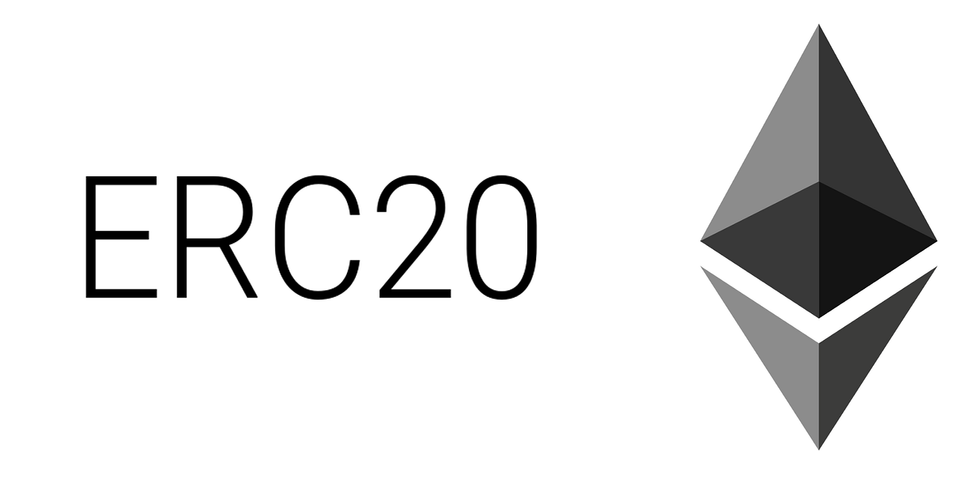Crypto Guide: What are ERC-20 Token Standards?

ERC-20 is a popular token standard and the base technology for some of the top stablecoins and altcoins, like USDT, USD Coin, and Chainlink. A token standard is sa set of rules that smart contracts and tokens must comply with to operate on a specific blockchain or become inoperable with other systems or apps. Whether you're a beginner, an experienced trader, or a developer, it's crucial to understand crypto's top token standards, including ERC-20.
If you're a crypto trader, a degen, or just dipping your toes into trading, then surely you've heard or read about tokens based on the 'ERC-20' standard. Some popular tokens using this standard are Tether's USDT, USD Coin, Chainlink, and Shiba Inu. Even some of the hyped tokens in pre-sale are advertised as 'ERC-20 based', suggesting that these are as secure and functional just like Ether. So, what exactly is an ERC-20 standard, and why is it popular among devs and degens?
ERC-20, or Ethereum Request for Comment 20, is a top token standard
In crypto, ERC-20, Ethereum Request for Comment 20, is a leading technical standard for implementing and issuing assets (like tokens) on the Ethereum blockchain. This protocol was introduced in 2015 by Fabian Vogelsteller and has since served as the foundation of many popular cryptos like Shiba Inu (SHIB), Polygon (MATIC), and Uniswap (UNI).
It's called 'Request for Comments' for a reason: it defines the rules for interaction between nodes on a network, and these rules are regularly revisited and debated by the community members before they arrive at a consensus. Therefore, the ERC-20 is a document that spells out the rules on how digital assets are transferred within the blockchain, and how the supply and address balances are tracked and recorded.
For individual traders and holders, it's good to know how protocols, including how ERC-20 works. Understanding these token standards is helpful for trading and in moving your cryptos to ensure that you're sending them on the correct network. If you happen to pick the wrong network or protocol, your recipient may not get it, or worse, it may get lost. For devs, knowing these token standards helps when training and building decentralized applications (dApps).
What are the functionalities of ERC-20?
As proposed by Fabian Vogelsteller in November 2015, the ERC-20 comes with plenty of functionalities, particularly for tokens with smart contracts, including the following:
- Transfer tokens from one account to another
- Track the token's total supply on the network
- Approve whether a specific amount of token can be spent or used by a third-party account
If smart contracts implement the methods, they're considered ERC-20. Once deployed, they're responsible for tracking tokens created on the Ethereum chain. The ERC-20 standard plays a crucial role within the Ethereum blockchain. This specific standard lists the rules and conditions that Ethereum tokens using smart contracts must follow.
Also, the implementation of the ERC-20 standard is in line with Ethereum's promise of scalability—ensuring compatibility of the different tokens created on the Ethereum blockchain.
A quick look at the popular ERC-20 tokens in the market

As of May 2025, several ERC-20 tokens stand out by market cap, reflecting their popularity among devs and individual traders. Here's a rundown of some of the most notable ones, their use cases, and their unique features.
1. Tether (USDT): It's the most widely used stablecoin that's pegged to the US dollar, and supports cross-border payments and boosts liquidity across markets. This popular crypto boasts a one-to-one collateral ratio, meaning that for every USDT in circulation, it's backed by 100% actual fiat in reserves. Its owner, Tether, tracks and maintains the balance of its reserve through its Transparency page, where it acts as the third-party custodian for the fiat currencies. Currently, there are 151,053,955,711 tokens in circulation, with a market cap of $151 billion, just behind Ethereum and Bitcoin.
2. USD Coin (USDC): USD Coin is another widely used stablecoin, and currently the 7th biggest crypto by market cap, with a $60 billion market capitalization. It's a fully collateralized USD stablecoin, which means each token by backed by $1, and it acts as the bridge between dollars and trading on crypto exchanges. Together with USDT, USD Coin dominates the stablecoins industry, controlling almost 85% of the market.
3. Binance Coin (BNB): Binance Coin powers the Binance ecosystem, where it's used to pay for token sales and transaction fee discounts. In addition to this primary use case, the Binance Coin is also used to get discounts on trading fees, earn perks through the Binance account tiers, or use it as a regular cryptocurrency to pay for products and services online. BNB's supply is capped at 200,000,000, and with a market cap of $94 billion.
4. Chainlink (LINK): Chainlink (LINK) is a decentralized oracle network that allows smart contracts to interact with external APIs and real-world data securely. In short, Chainlink serves as the bridge between blockchains (closed systems) and the outside world (which may refer to weather data, market prices, bank payments, and many more).
Chainlink's native token is LINK, which can be used by devs and participants to pay node operators for delivering data, to incentivize accurate data reporting, and for staking purposes. The current circulating supply of LINK is 657,099,970, with a market cap of $10.2 billion.
5. Uniswap (UNI): Uniswap (UNI) acts as a governance token for a leading decentralized exchange that allows users to swap various tokens using their crypto wallets, without the help of a central intermediary. This Ethereum-based decentralized exchanger relies on an automated market maker system (AMM), where liquidity pools facilitate the exchange of tokens from the participants' wallets.
Users interested in participating in the swapping of ERC-20 tokens need their Ethereum wallets, like a Metamask, to get started. On this chain, liquidity providers are paid a 0.30% trading fee for providing liquidity.

